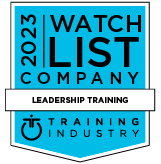
Ever wish you could read your employee's minds to see what they're actually thinking so you can better identify what they need from you, their leader?
Being an equitable leader requires knowing our people to the point that we know precisely what they need and how they need it in order to succeed.
Easier said than done.
To be an equitable leader we must first establish clear communication on what we're asking for, then build trust and give our team the autonomy they crave to get the job done (no more micromanaging). This then gives us free time to develop a relationship with our people to understand who they are and what they need from us.
Again, easier said than done.
Each member on our team has a unique set of needs and it isn't the easiest to identify what those needs are or even where to start.
Truly mastering the level of insight into our team needed to develop a psychologically safe work atmosphere can take years, which means the benefits of increased productivity, effective innovative strategies, and increased employee health can also take years to cultivate.
Do we really have time to waste in reaping those rewards?
The human brain contains a vast variety of biases that get in the way of being an equitable leader.
Learning to overcome our biases in pursuit of clarity, autonomy, relationships, and equity is the crux of DX's program, CARE Anywhere.
Our goal was to develop a tool that helped leaders overcome their biases and meet the needs of their people by tailoring their leadership approach on individual needs.
This is the new golden rule of leadership, "Treat others how they want to be treated."
This means not stealing autonomy from our teams but instead allowing them to figure out how to execute their tasks, even if that means a mistake or two along the way.
Anyone who has managed a newbie knows that this is no simple feat.
Oftentimes more guidance is needed than normal when an employee is in a developmental period; be it taking on new responsibilities, learning a new skill, or being brand new to the team overall.
The way we treat a newbie versus the way we treat someone who has been working for us for 5+ years is a night and day comparison, especially when it comes to autonomy.
If those are our extremes, how do we as leaders know where the remainder of our team sits on that spectrum?
Enter DX's latest and greatest: CARE Aware
We identified 18 items across 9 spectrums of characteristics we could measure in a brief survey to provide leaders a foundational knowledge of where their people sit under the umbrella of CARE.
Clarity, Autonomy, and Relationships have 3 spectrums each.
We use the survey scores to generate a profile on each individual team member with a tailored recommendation on what they crave from leadership and how to treat them equitably.
In the development stage of creating CARE Aware, we looked at historic experiences we've had with workplace personality and behavioral assessments and took note of what we loved and what we hated.
First, we hated the length and didn't want our assessment to be pages upon pages long.
No one has time for a 120 item personality inventory, no matter how insightful it may be.
We also didn't want strict categorical lines.
In most "type indicator" assessments, there is often a line drawn in the sand that buckets everyone into two categories across a spectrum. Depending on where you sit in that spectrum, two points in either direction on a scale might categorize you differently.
For example, if introversion and extraversion are measured in a -30 (introvert) to +30 (extravert) scale with 0 as the categorical line, someone who is a +2 extravert will have more in common with someone who is a -3 introvert than they would with a +25 extravert.
These lines and buckets do little to tell us anything about ourselves or the people we lead. It fails to name the nuances of an individual.
CARE Aware therefore has a moderate category in the center.
Instead of bucketing introverts and extraverts we categorize participants as introverts, extraverts, and ambiverts.
This way we get to see ourselves on a full spectrum.
Are you -3 introvert and +3 extravert and therefore an ambivert? Let's find out.

The final item we focused on in creating CARE Aware was differentiating between the moderates.
Assuming that most people would fall towards the center of each spectrum, we wanted a way to gain more insight into the people who fall in those central categories, like ambiverts.
In most aggregate scoring assessments, our score on a spectrum is calculated by combining all the relevant scores on that spectrum and giving us a final score.
The problem with that is that someone with a high preference in both directions on a spectrum will look the same as someone who scores with a slight preference in both directions.
For example, in CARE Aware we examine participants on a spectrum of preference in guidance vs. choice (this is one of three spectrums in our "Autonomy" section).
If someone scored high in both directions, we could assume they enjoy the freedom to choose how they execute a project while still wanting guidance that ensures they are heading in the right direction.
If someone scored low in both directions, we could assume they don't take kindly to high oversight but also don't feel comfortable taking the reins on a project.
We as leaders would likely treat these individuals in very different ways, but without the discernment of moderate scores we wouldn't get the nuances of how they like to be treated.
CARE Aware helps leaders identify outliers in our team and learn how to take those extreme traits and use them to our advantage. This is the power behind knowing our people.
We see the nuances and can strategize with our people's strengths while having empathy for their personal needs.
DX's CARE Aware Preference Indicator helps leaders gain better insight into our team's unique set of needs by pinpointing where they are on 9 spectrums relating to Clarity, Autonomy, and Relationships.
Once we as leaders understand our team's preferences, we can then provide each team member the equitable treatment they crave.
Welcome to DX's short cut toward psychological safety: understanding the nuances of our people's needs through CARE Aware and treating our people how they want to be treated.
Insights

Subscribe to Our Monthly Newsletter!
For managers and talent professionals who truly believe in putting people first, the CARE to Win blog is your gateway to the latest insights on human-centric leadership. Join us as we champion the people first movement.
Need some time apart? Are we emailing you too often? Just give us your feedback, and we promise we’ll respond. We really do care. And if it’s still too much, just unsubscribe. It’s cool.
 Ryan Aguiar
Ryan Aguiar




